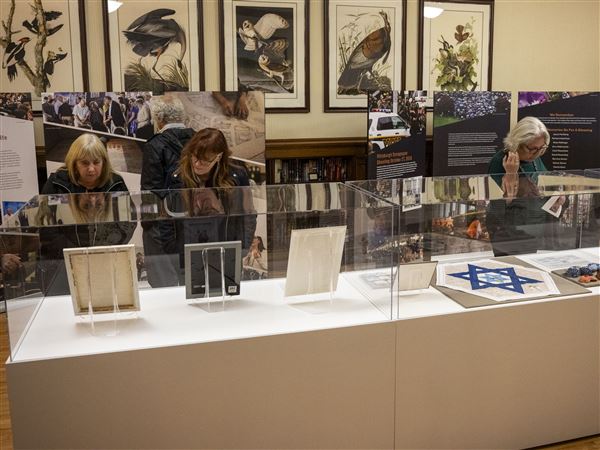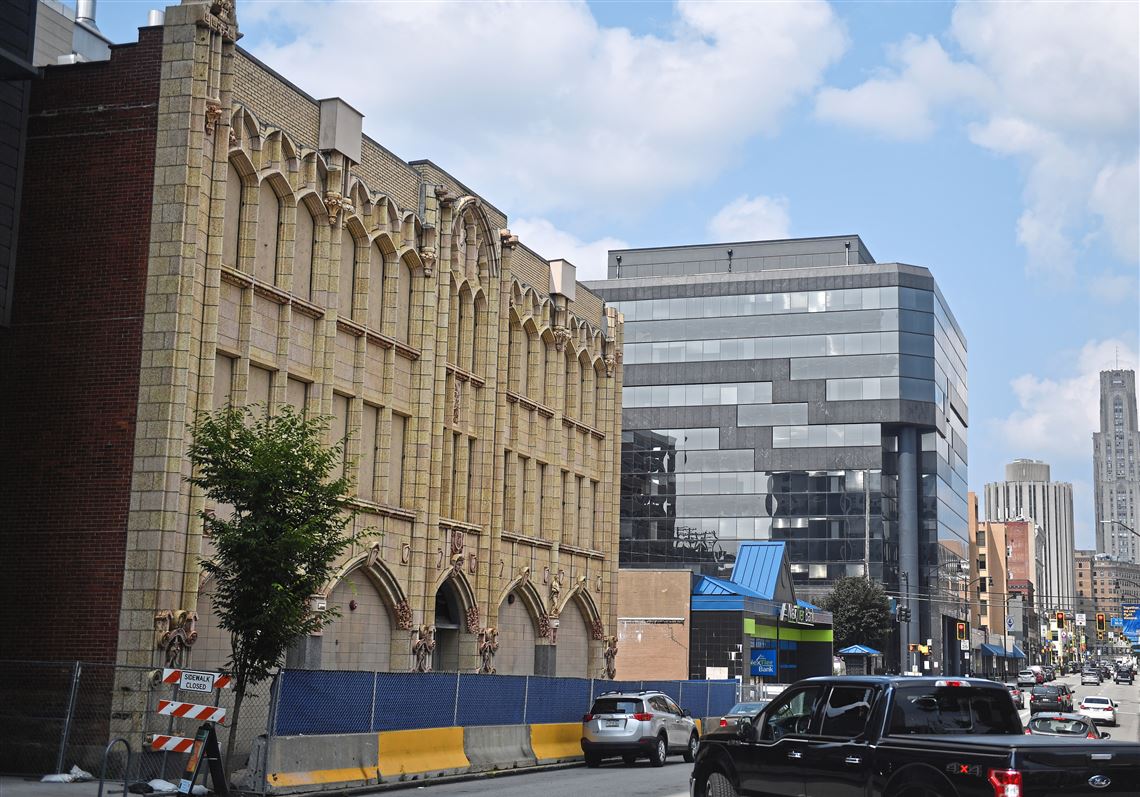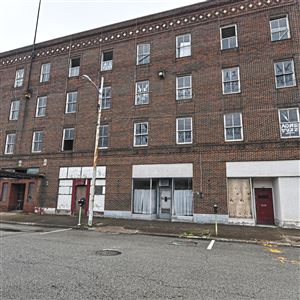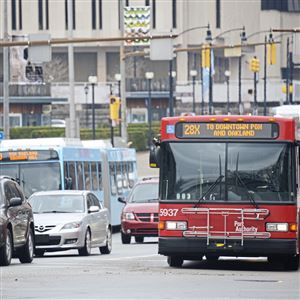The University of Pittsburgh is preparing to move ahead with the demolition of an Oakland building that has been nominated for a historic designation and was once used by the Croatian Fraternal Union.
Pitt will brief the city planning commission Tuesday on its proposal to tear down the three-story building at 3441 Forbes Avenue, which last served as Allegheny County Health Department offices.
However, while Pitt intends to bring down the structure, it is proposing to preserve and reuse the facade “in conjunction with construction of a new building,” according to materials submitted to the planning commission.
Several years ago, Preservation Pittsburgh nominated the art deco-style building for a city historic designation, one that would have prevented its demolition were it to be approved.
The structure was also among 10 places singled out by the Young Preservationists Association of Pittsburgh as worthy of being saved.
Representatives from neither organization could be reached for comment Wednesday.
But according to the minutes from a May 25 community meeting sponsored by Oakland Planning and Development Corporation, Pitt has been in discussions with Preservation Pittsburgh regarding an agreement to preserve the facade.
The Pittsburgh History and Landmarks Foundation also is on board with an agreement that would save the terracotta face, president Michael Sriprasert said Wednesday.
Based on the OPDC minutes, the city historic review commission put the building’s nomination on hold while the various parties tried to work together to find a solution.
In materials submitted to the planning commission, Pitt stated that the building had been “altered since its period of historic significance and is in a substantial state of disrepair.”
“The building is in imminent danger of collapse, and reuse is not feasible,” it added.
Pitt also stated that it plans to dismantle the facade carefully, with the condition and location of each piece catalogued. The pieces then will be packed and stored at a secure location.
Once the facade has been removed, the rest of the building will be torn down.
According to the briefing materials, the renovated facade will be reinstalled on the property “in the same configuration as existed prior to removal” as part of the construction of a new building.
The university gave no details as to what type of building it was planning to erect at the site, and Pitt spokesman David Seldin didn’t have much to add.
“We do not have firm plans for the use of the building at this time,” he said. “If the demolition is approved, there will be a major effort to catalogue the facade and get it into storage, after which we will focus on the future use of the site respecting the fact that the building is in the public realm.”
Once the facade has been removed and the rest of the building demolished, Pitt plans to grade and fence in the site while it mulls what it will build there.
In its OPDC presentation, Pitt produced a rendering that appeared to show a three-story and a seven-story building at the site with the facade wrapped around the former.
“The historic facade is repurposed as an entry portal into an urban courtyard sanctuary from which visitors enter the building,” the caption read.
Pitt purchased the current building from Allegheny County in 2018 for $1.9 million. The county had used it to house health department offices, including its sexually transmitted diseases clinic.
According to the historic nomination, the building was erected in 1928. For many years, it served as the national headquarters of the Croatian Fraternal Union of America.
Designed by architects G.W. Grange and Pierre A. Liesch, an associate to the famed Frederick Osterling, the building represented “an innovative and markedly rare commercial interpretation of the Flemish Gothic style in Pittsburgh,” the nomination stated. “The building has few analogs in Pittsburgh.”
Also on Tuesday, the planning commission will be briefed on changes to signage at PNC Park — one on the riverwalk overlooking the Allegheny River and one on the rotunda behind home plate.
The biggest changes appear to be the addition of the PNC symbol to both of the signs and adjustments to the lettering.
Mark Belko: mbelko@post-gazette.com or 412-263-1262.
First Published: July 22, 2021, 10:00 a.m.
Updated: July 22, 2021, 10:27 a.m.


















